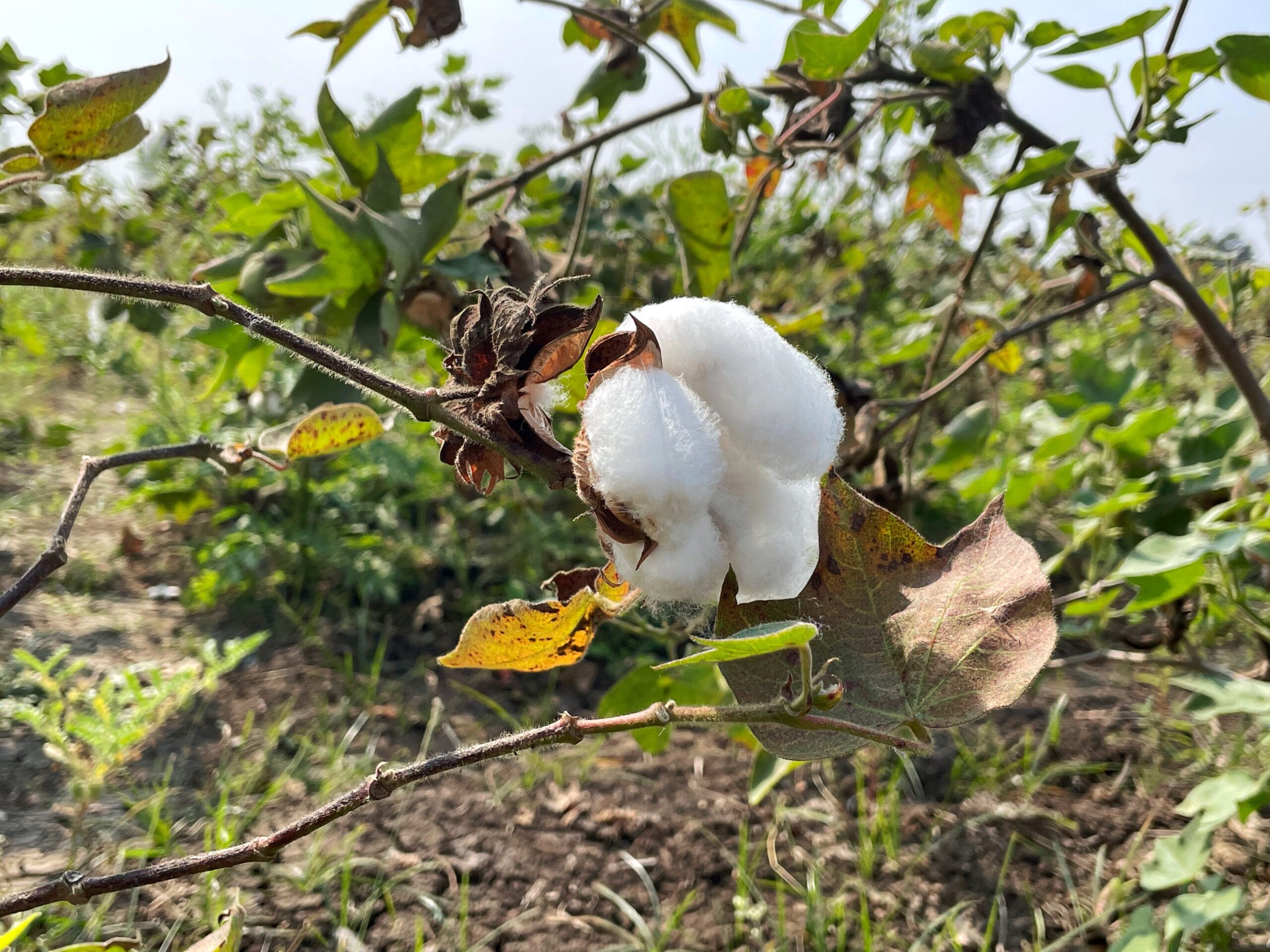scroll

Harshadbhai Jagdishbhai Thakrani hails from a joint family in Jatavira, in the Kutch district of Gujarat, India. When asked about his family’s history and relationship with farming, he speaks of how his family members are involved in a variety of businesses – ranging from a general store run by his uncle to a footwear store managed by his older brother. Harshad himself holds a bachelor’s degree in commerce, though he realized early on that farming is what he wanted to do for a living. “I took up farming because I’m passionate about it.”
“I did not want to spend my day at an office job. Not when I could choose to be at the farm all day.”
On Harshad’s 15-acre farm, his family cultivates an array of crops including mustard, wheat, and groundnuts. However, cotton is the major crop cultivated, spanning more than 10 acres. “Every day we travel around 12 kms from our home to where our farm is. We carry lunch and spend the day at the farm, until the day’s work is finished.” However, yields were low and Harshad realized that traditional farming methods, which had been in practice for several years, were counterproductive to their land and income. As a result, Harshad decided to switch to sustainable cotton farming, joining the Welspun Foundation for Health and Knowledge.
One of the leading cotton suppliers globally, Welspun had been working with cotton farmers in the Kutch region since 2017 to promote improved productivity of cotton at lower costs. Training and capacity-building sessions were held for Harshad and other cotton growers by Welspun. In these sessions, knowledge around new cotton varieties, fertilizer management, soil management, water management, pest management, and biodiversity conservation were promoted among the farmers.


“Welspun is the backbone of our sustainable cotton farming activities.” Harshad recounts how the organization’s field officers have been instrumental in their transition to improved farming practices. “When we first decided to make a change, Welspun gave us a long list of dos and don’ts.” This included avoiding the application of harmful fertilizers like monocrotophos (banned in several countries around the world) and incorporating organic fertilizers instead. They turned to farm animals, mostly cows, to make organic fertilizers out of manure. This helped build the fertility of the soil, in addition to bringing in other co-benefits, for instance, a subsequent increase in the soil’s water retention capacity. With the use of organic fertilizers, crops became healthier and better equipped to survive more days without water. Harshad also used pheromone traps to monitor pink bollworm, a major pest that bores into cotton, and a cotton shredder to incorporate cotton stalks into the soil.
By collaborating with Boomitra, Welspun aims to increase farmer revenue and scale sustainable cotton production. Boomitra partners with organizations like Welspun to enable global soil carbon removal, while building resiliency for agriculture communities. Within Boomitra’s projects, farmers are provided insights to implement better land management practices while Boomitra’s AI & satellite technology monitors and verifies the increase in soil carbon. A majority share of the carbon credit revenue generated is then transferred back to farmers like Harshad, empowering them to reinvest in their lands and communities.
With the shift in focus to sustainable farm management, Harshad has immense faith in nature and its ability to regenerate and replenish. “I used to be fascinated by forests and how green they are without the use of fertilizers and other external influences, and how this is not the case with the crops we grow. But what I realized much later is everything a plant needs to grow and thrive, is already around it. Plants absorb carbon – a vital component for many ecosystem functions – from the atmosphere. However, a lot is lost when we resort to unsustainable farming practices, such as residue burning, and disrupt the natural flow of the carbon cycle.” This realization further paved the way for the prevention of residue crop burning. “Now we clear up the residual crop and put it back into the soil, building its fertility even more.”
Harshad reflects on how his perspective on cotton and its farming has changed since the implementation of sustainable farming practices. In the last few years, yields have drastically improved, under minimal expenses, while ensuring land regeneration and income generation. With capacity building and knowledge sharing, Harshad has turned things around for his land and livelihood.
To learn more about carbon farming in India, visit our project page.



